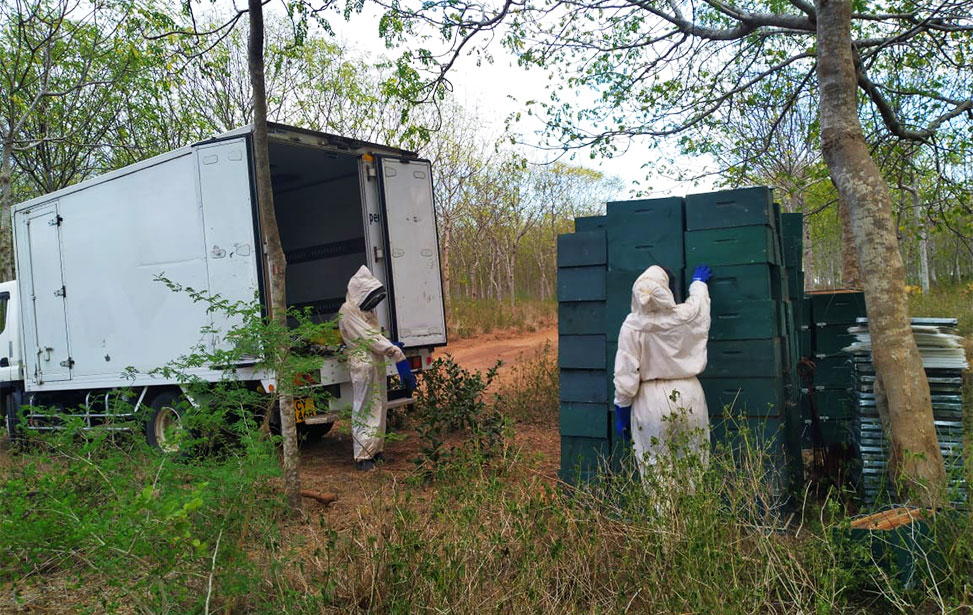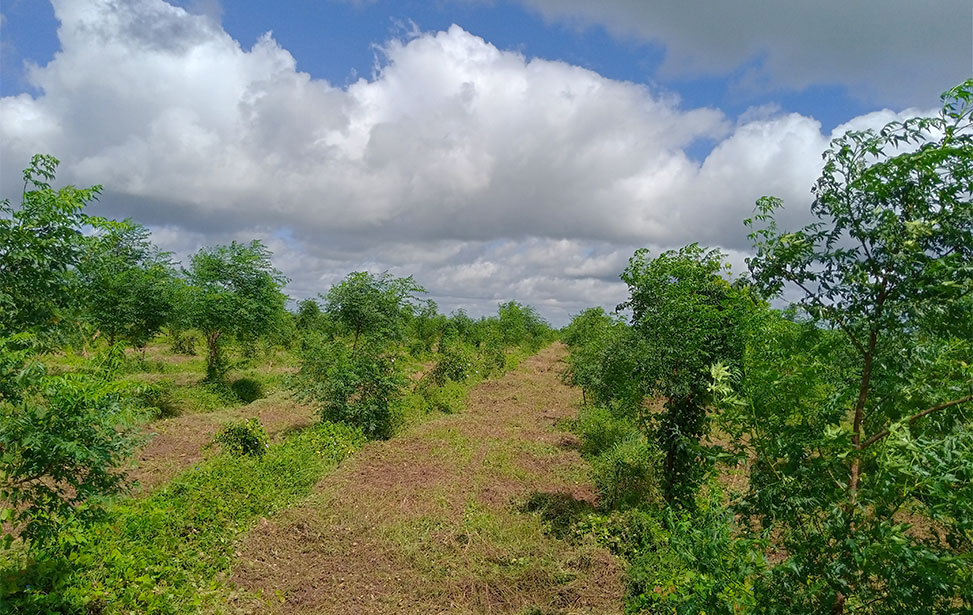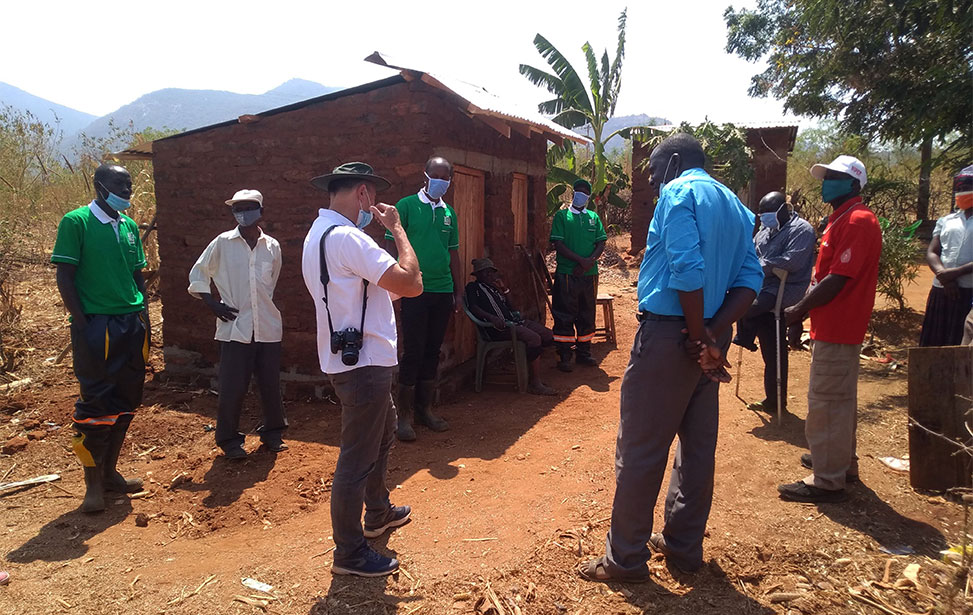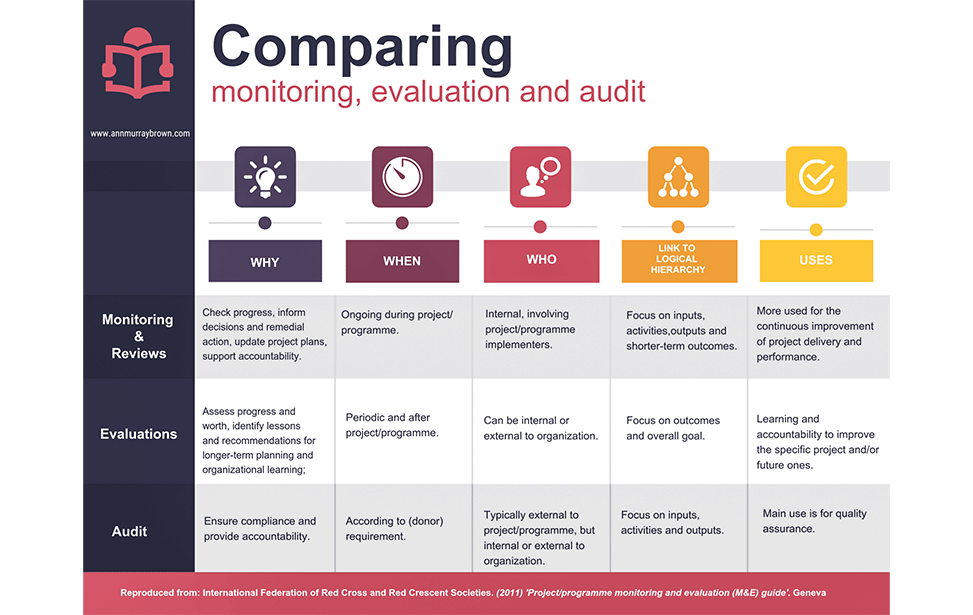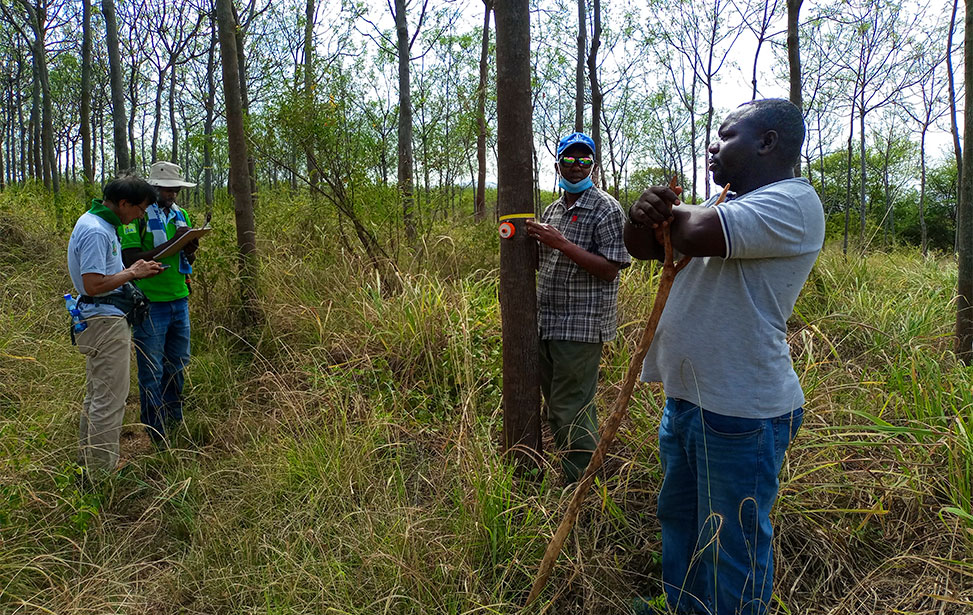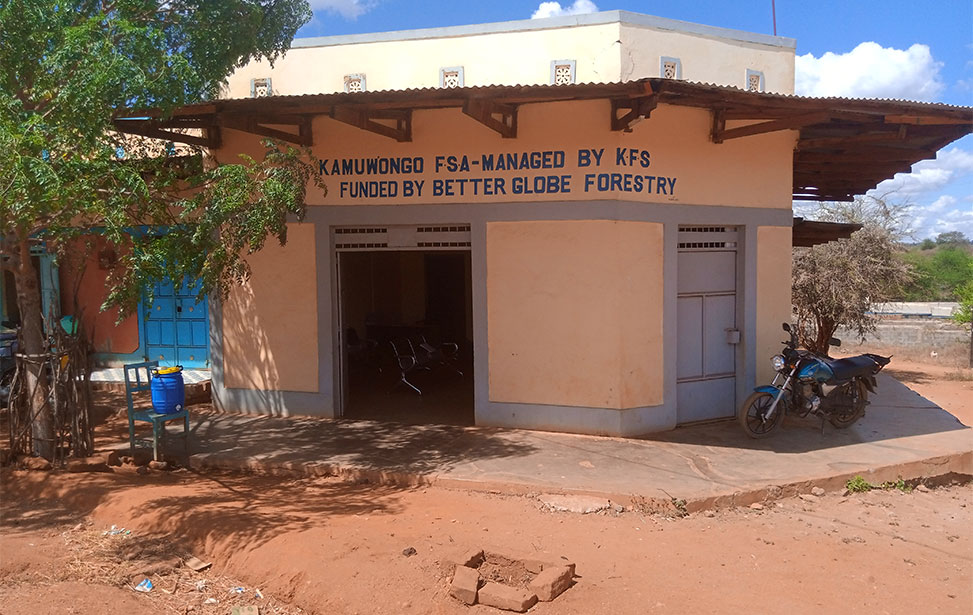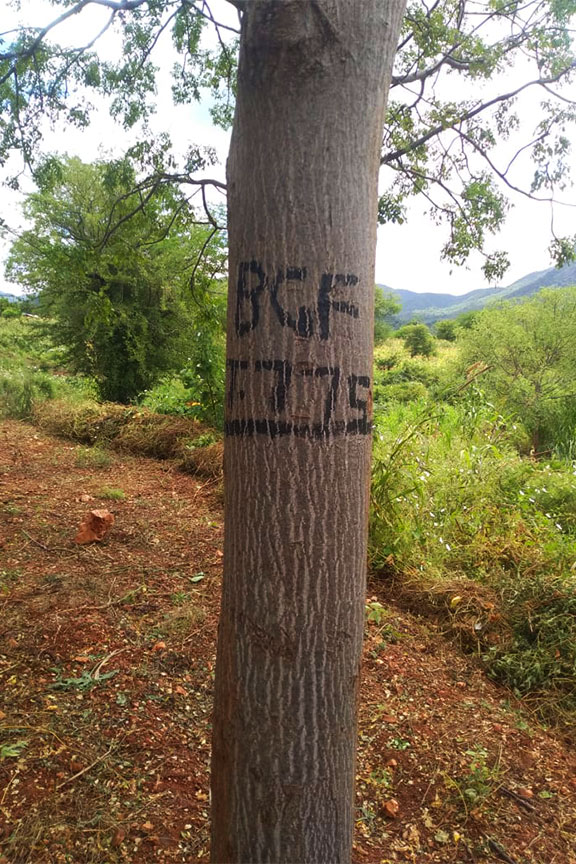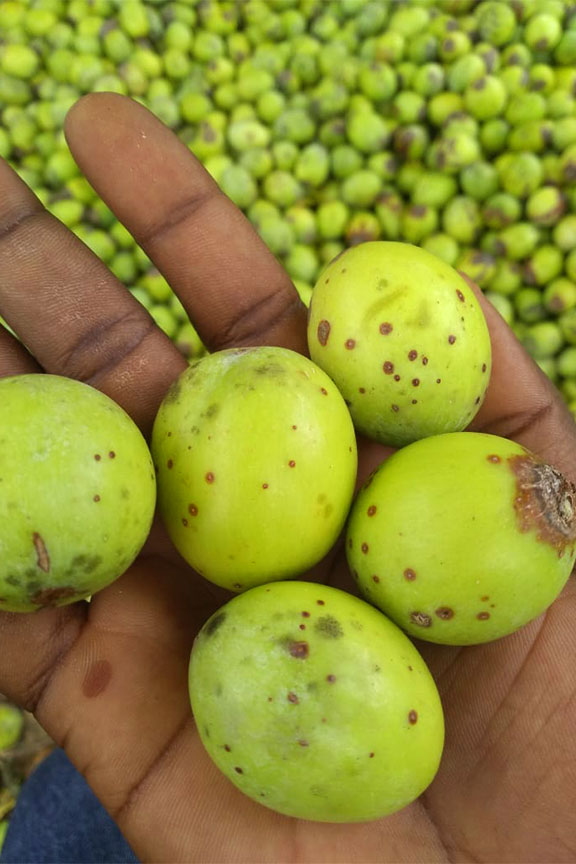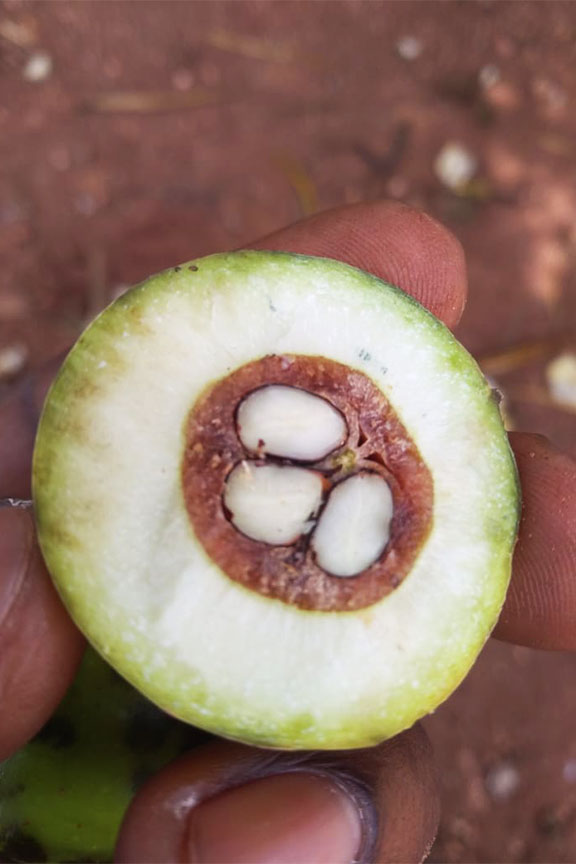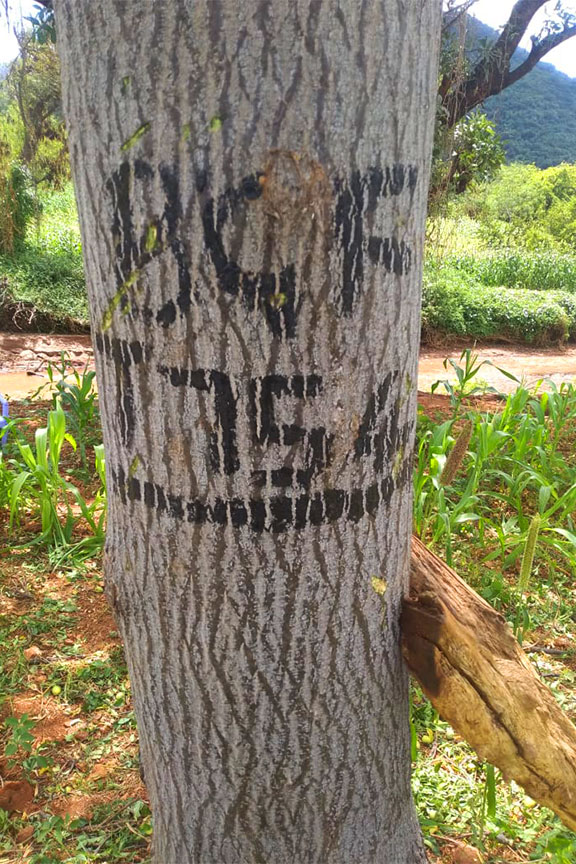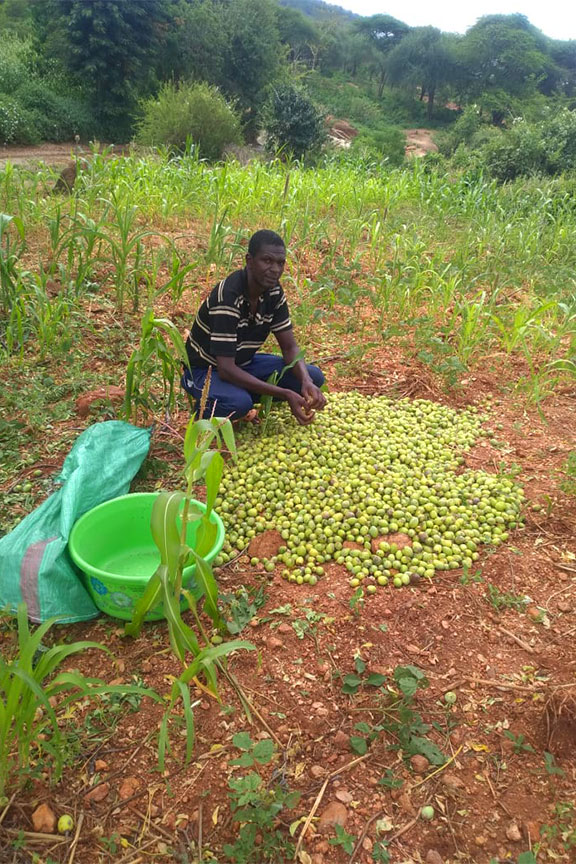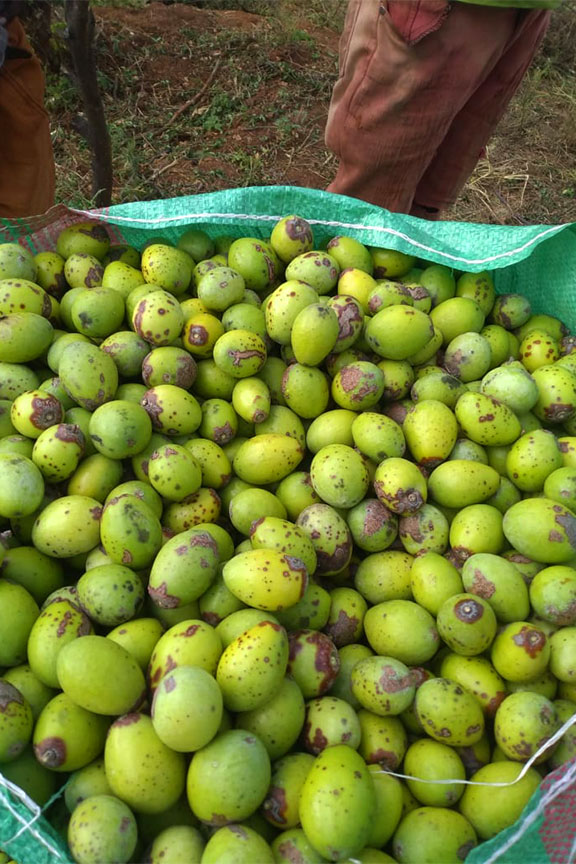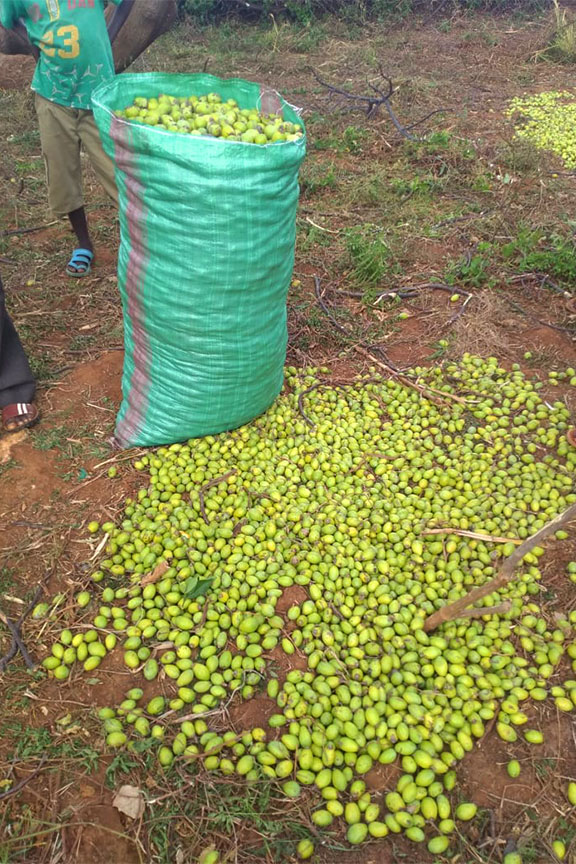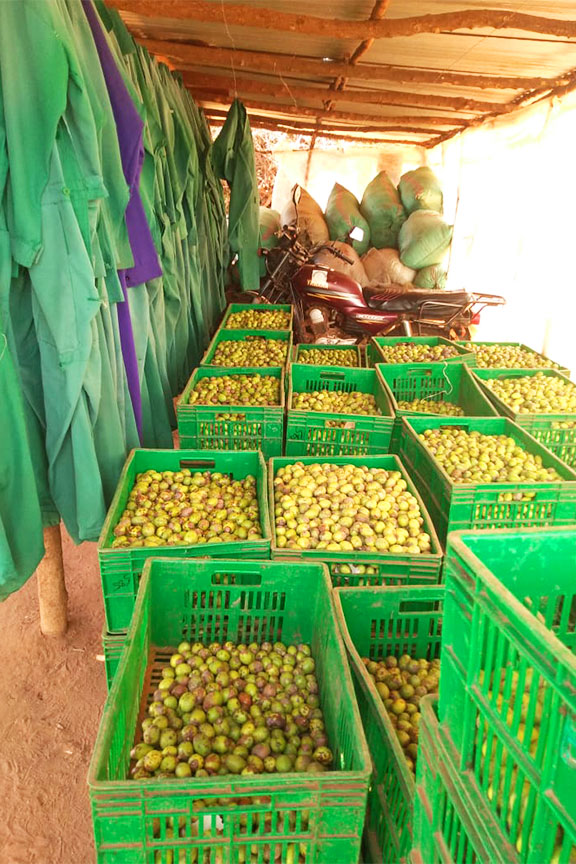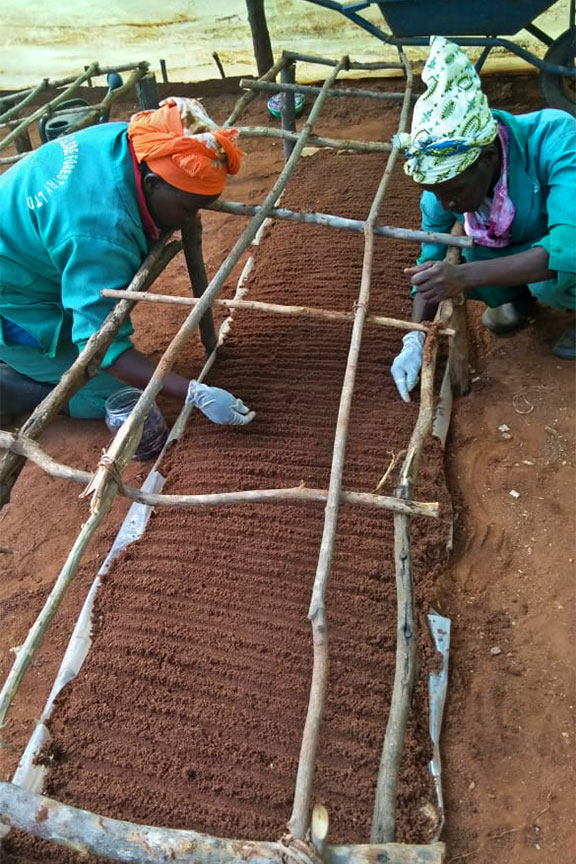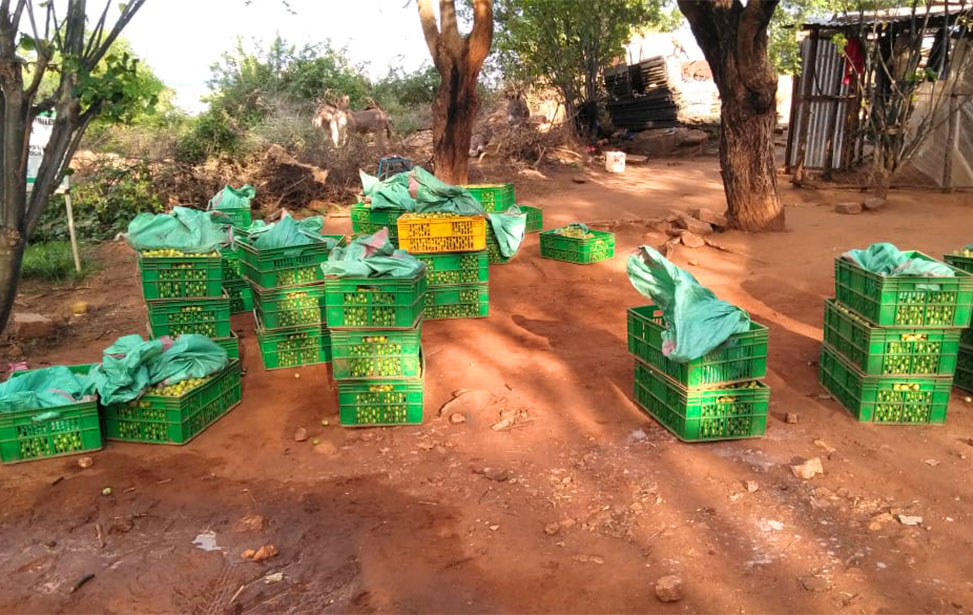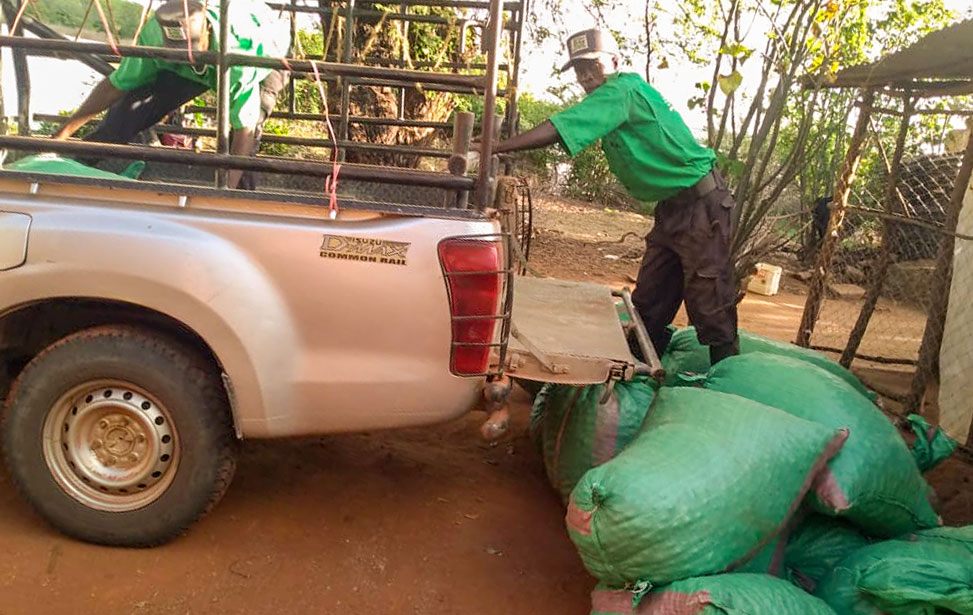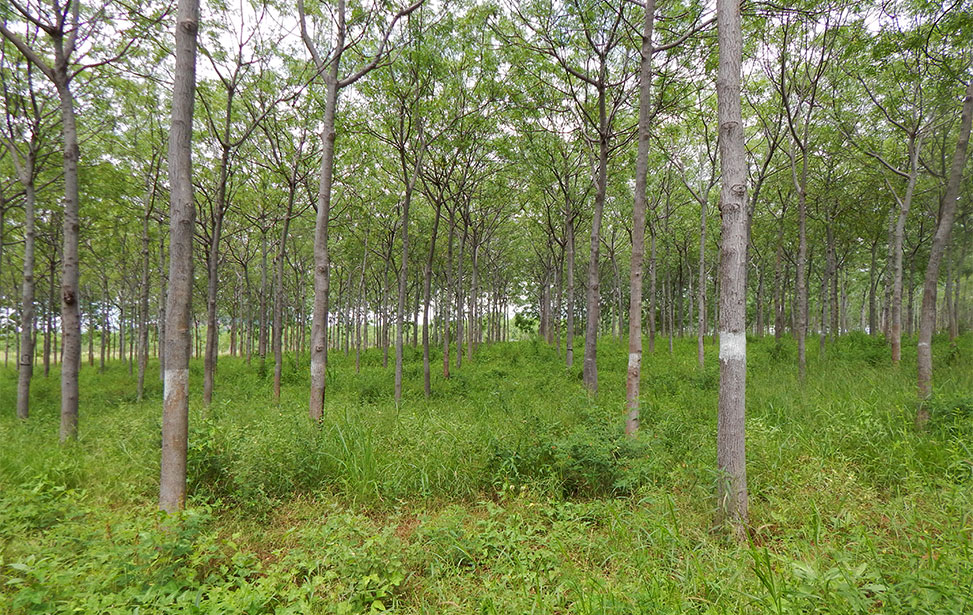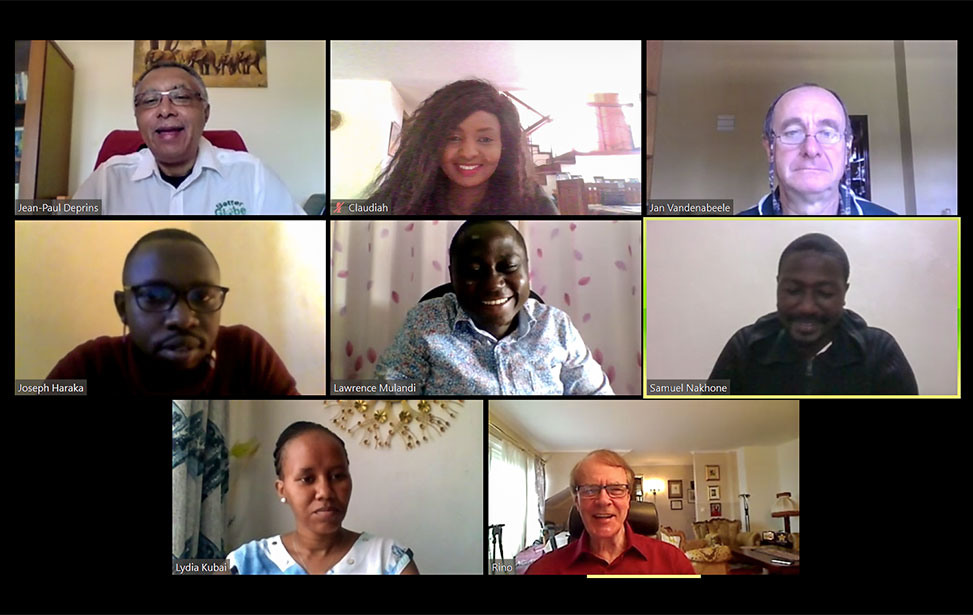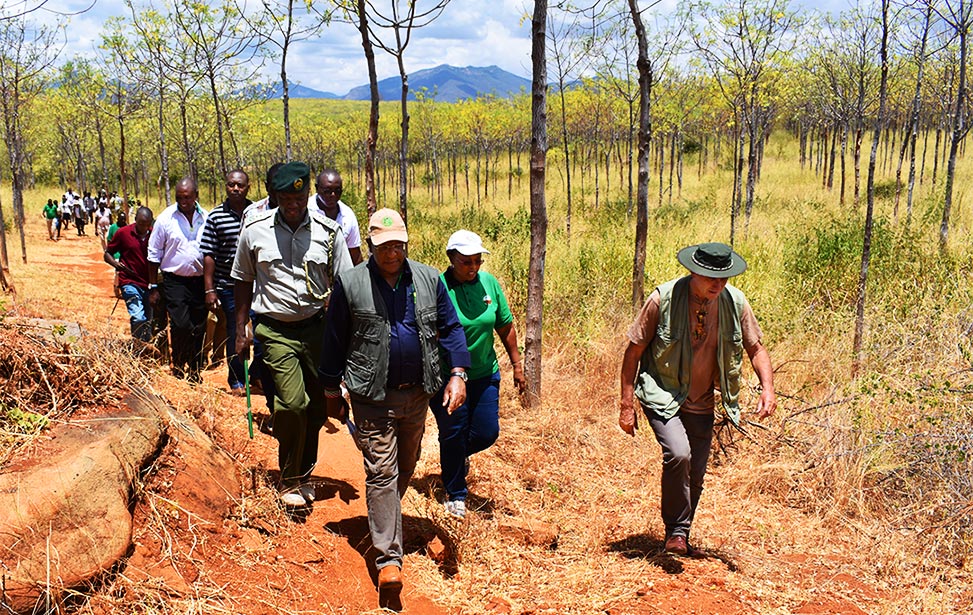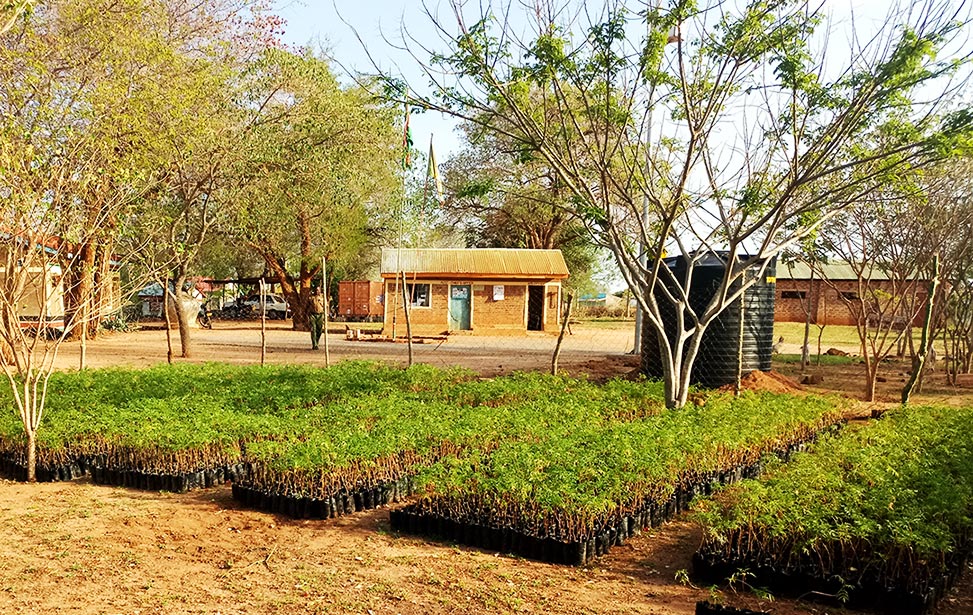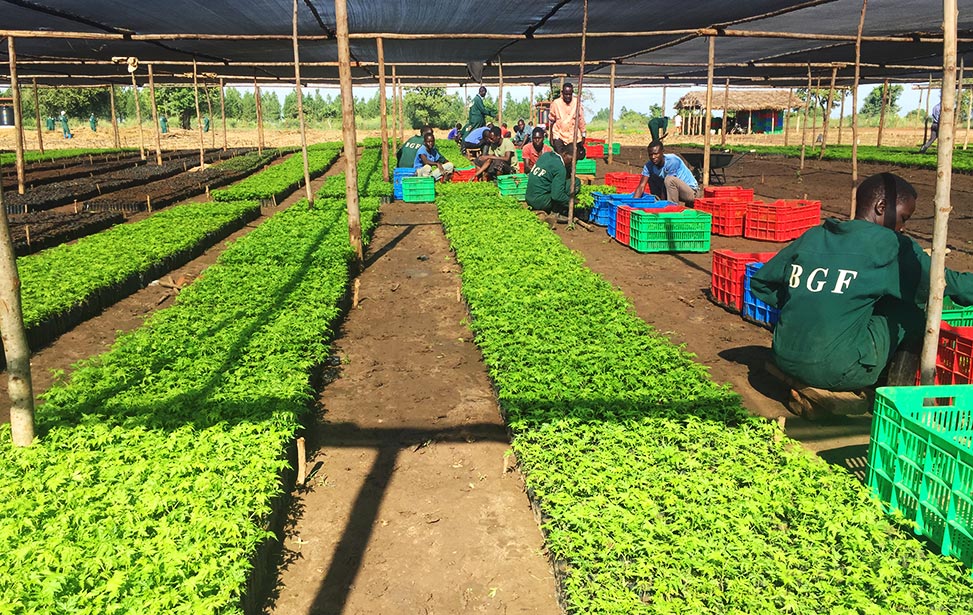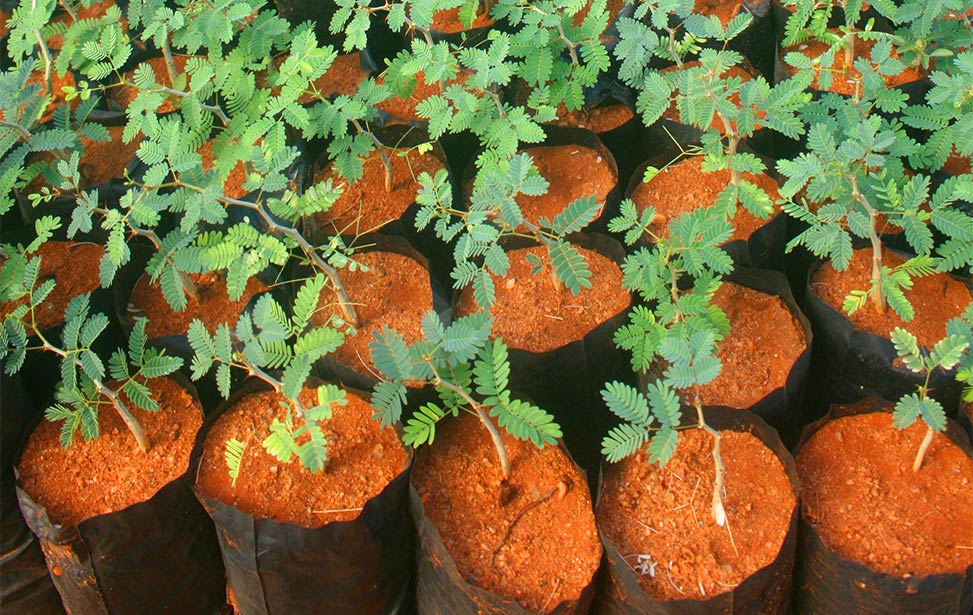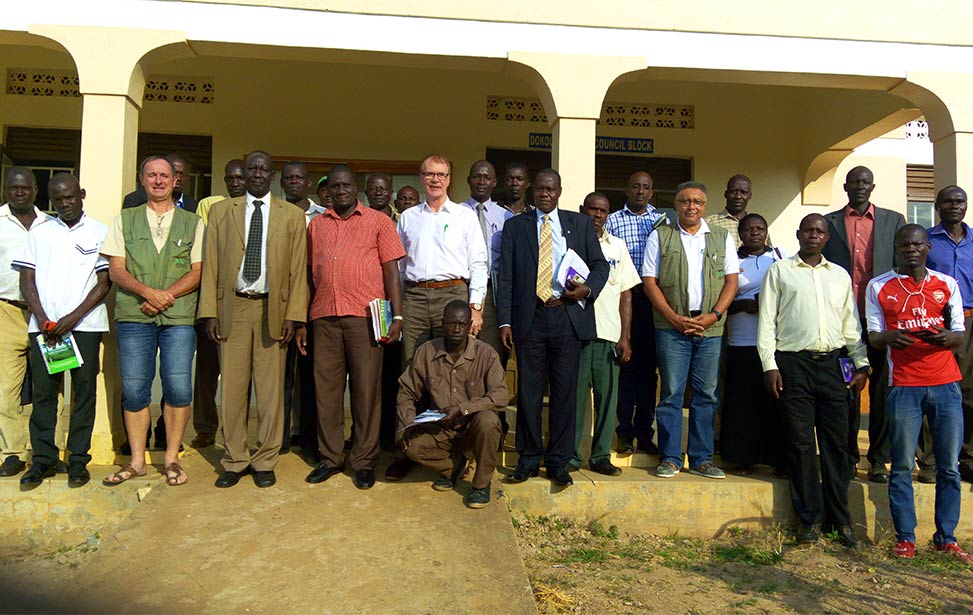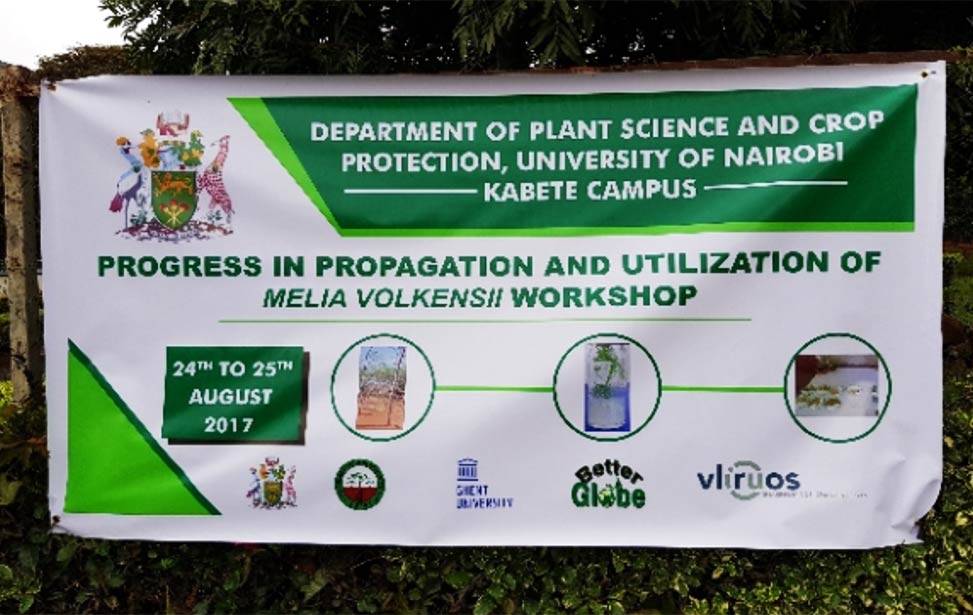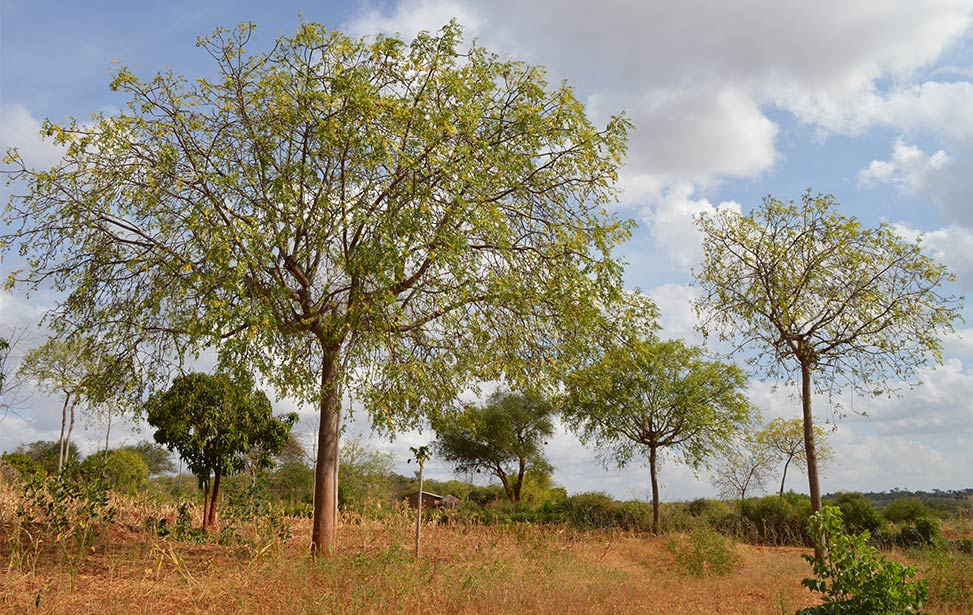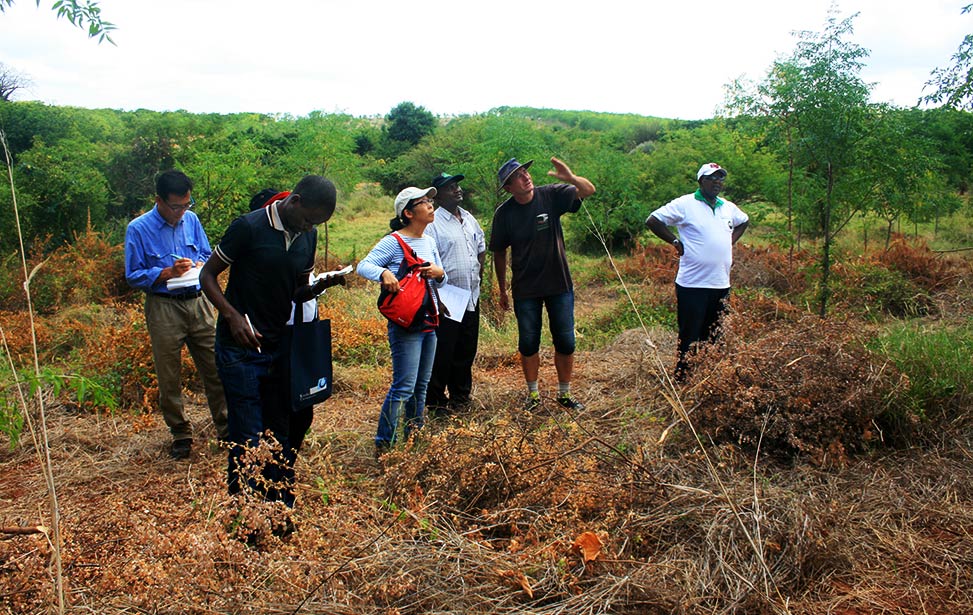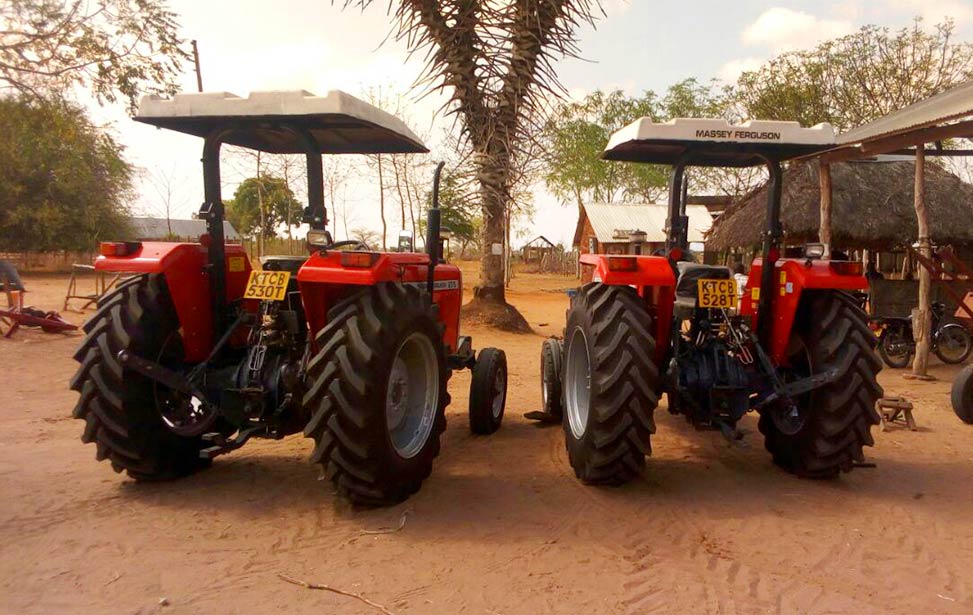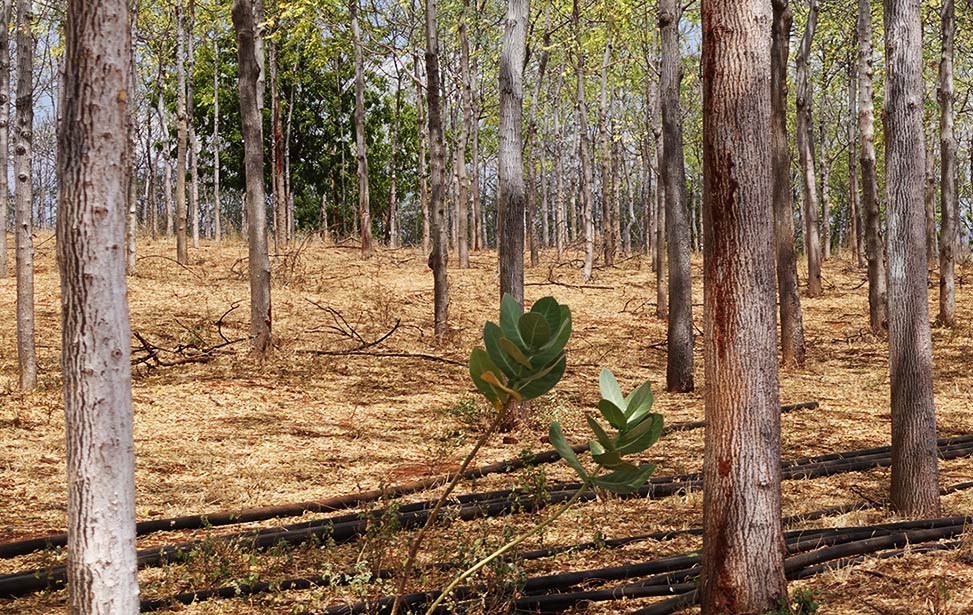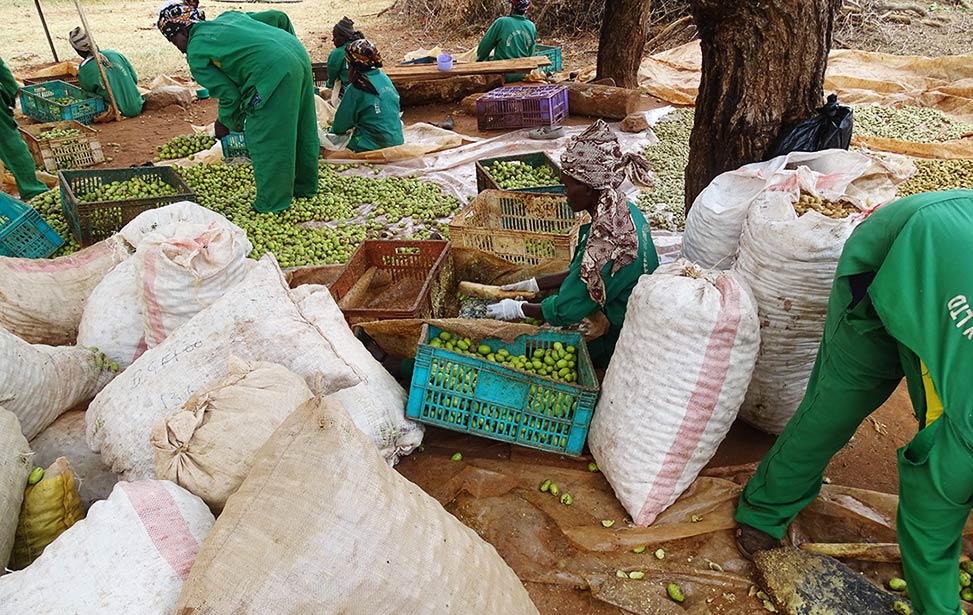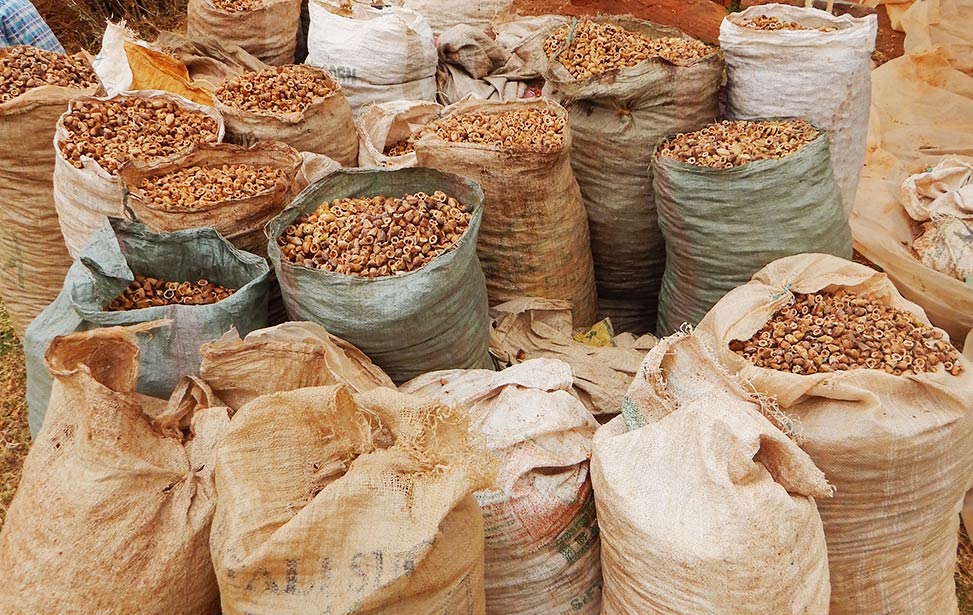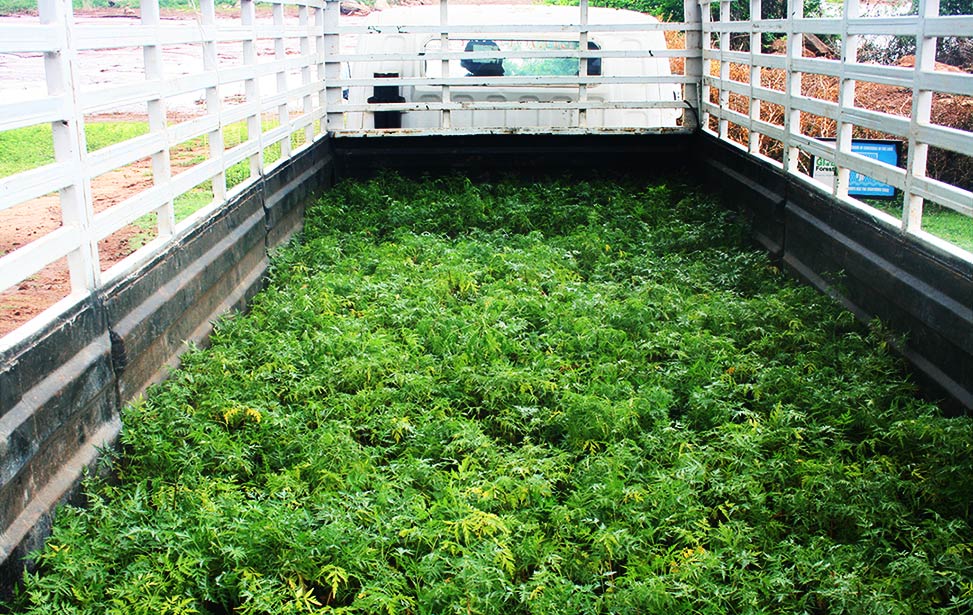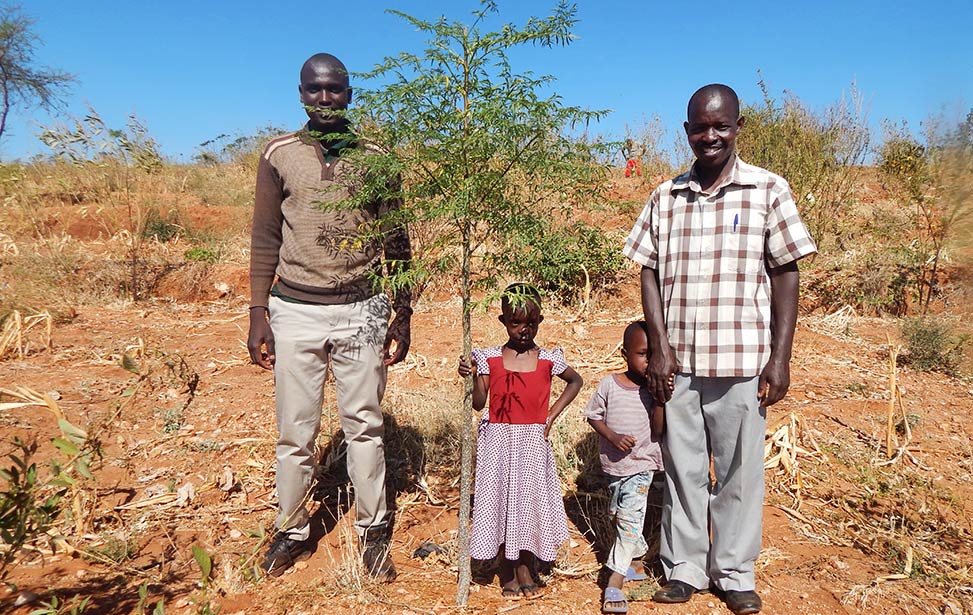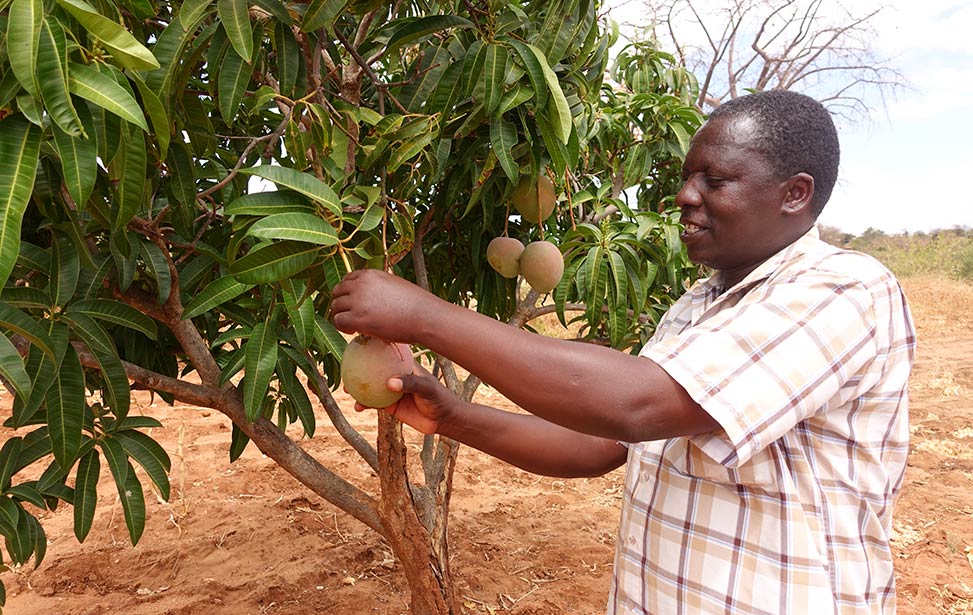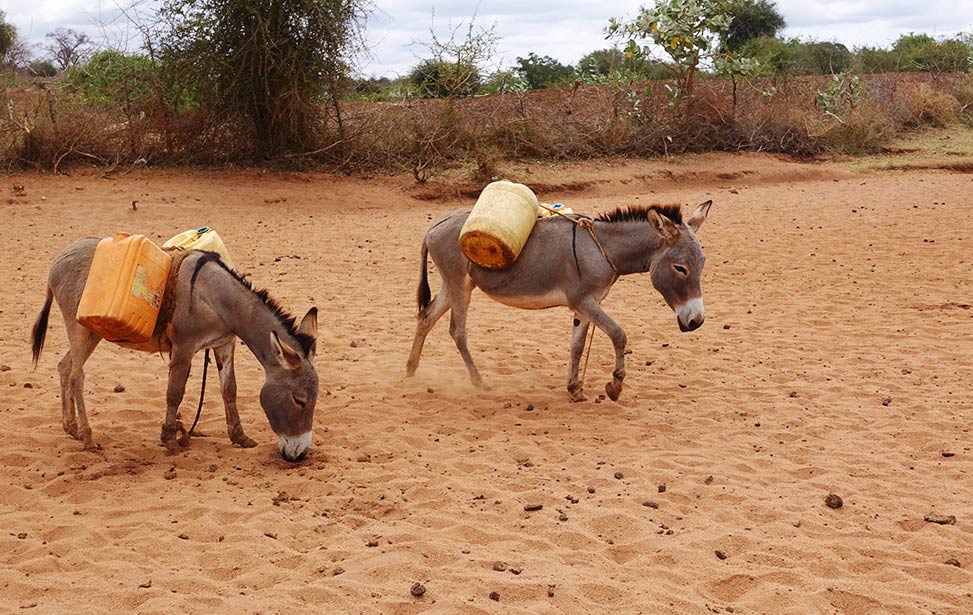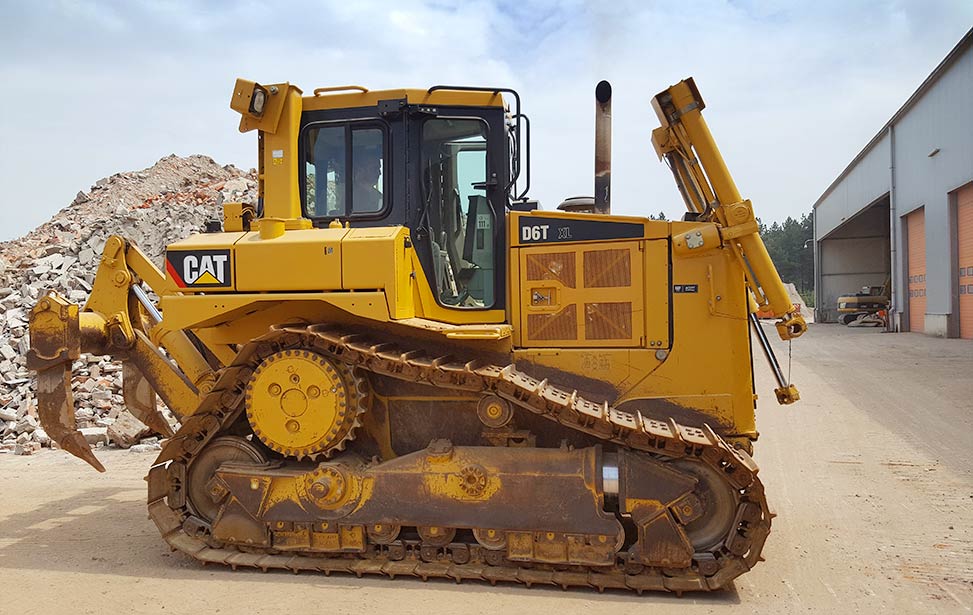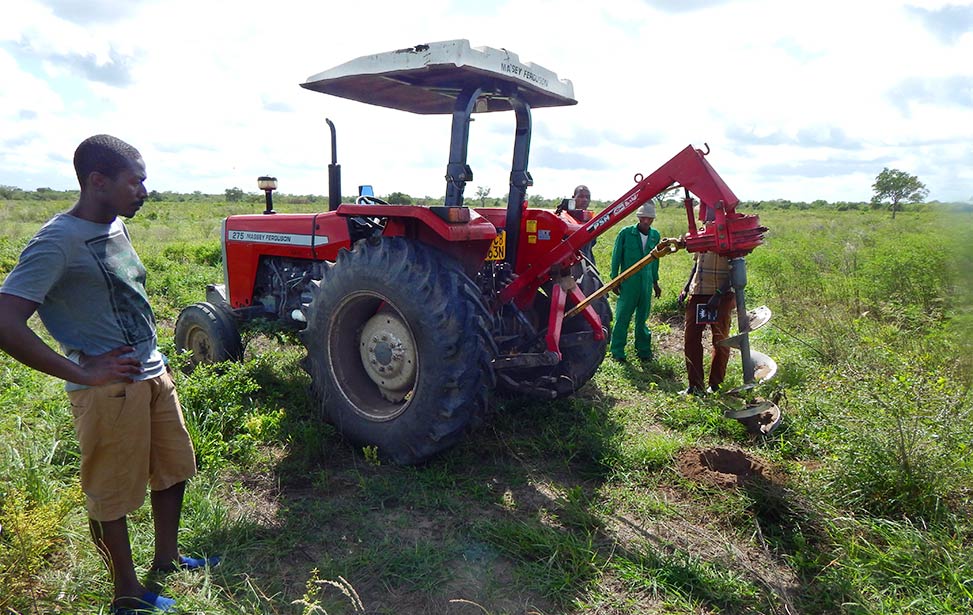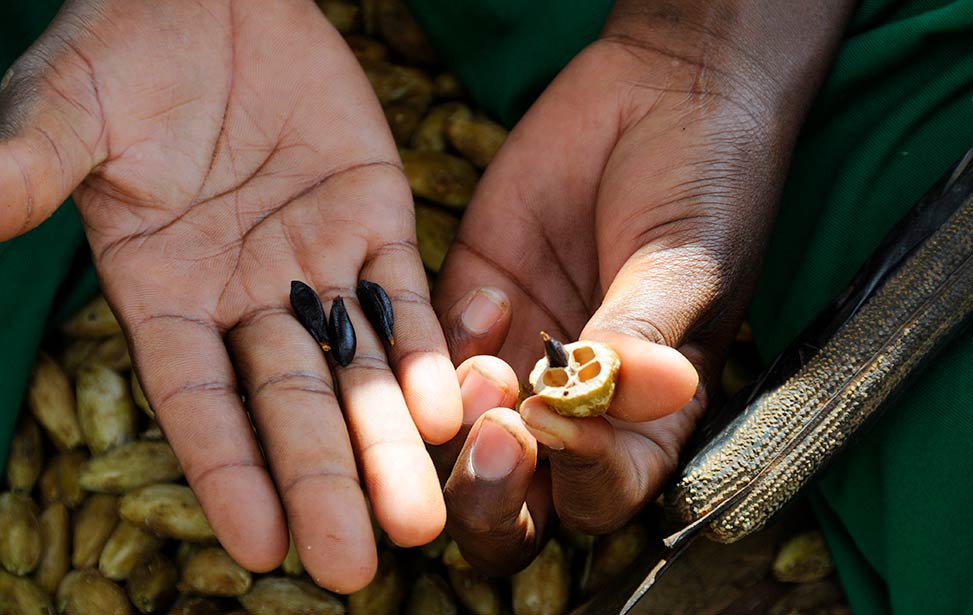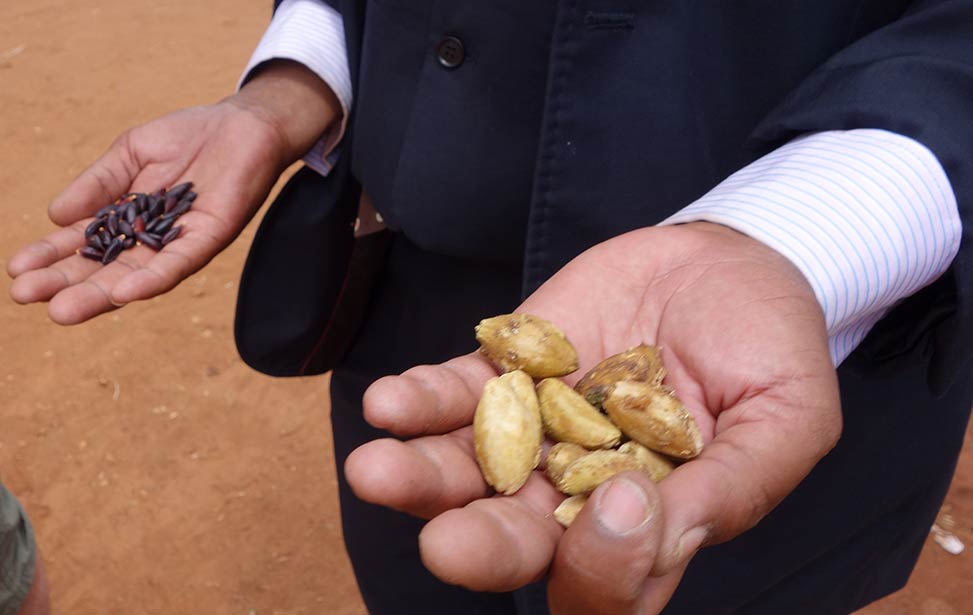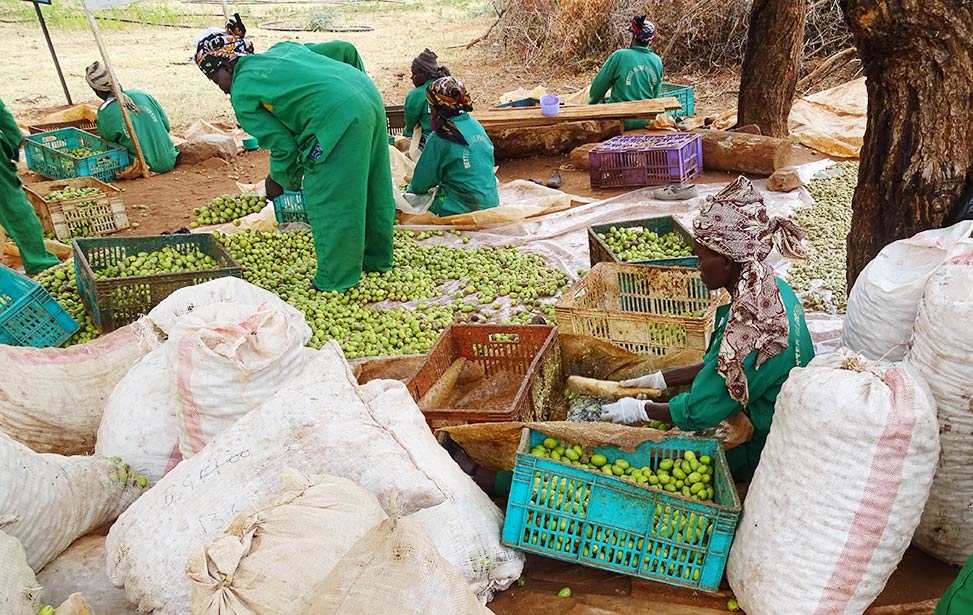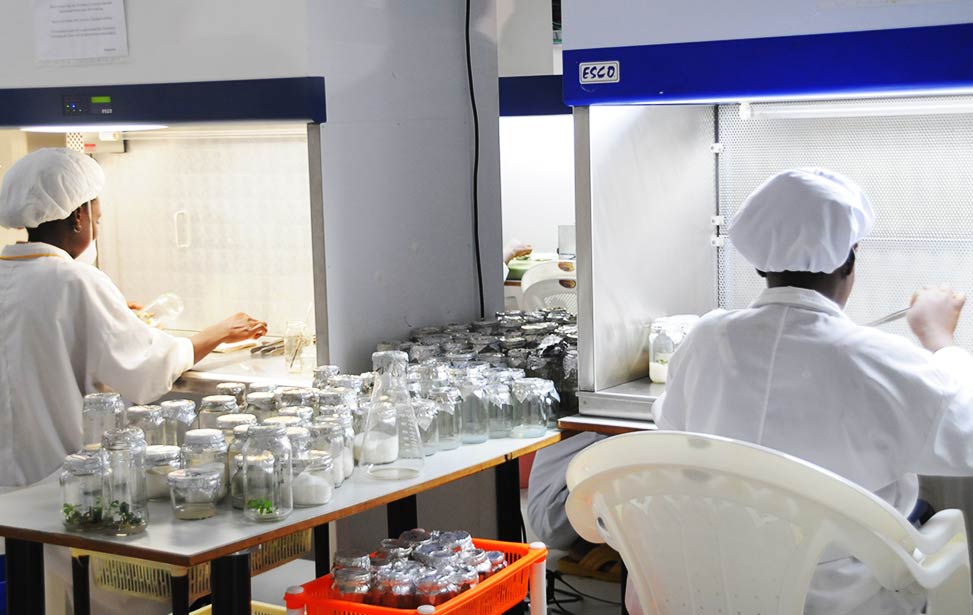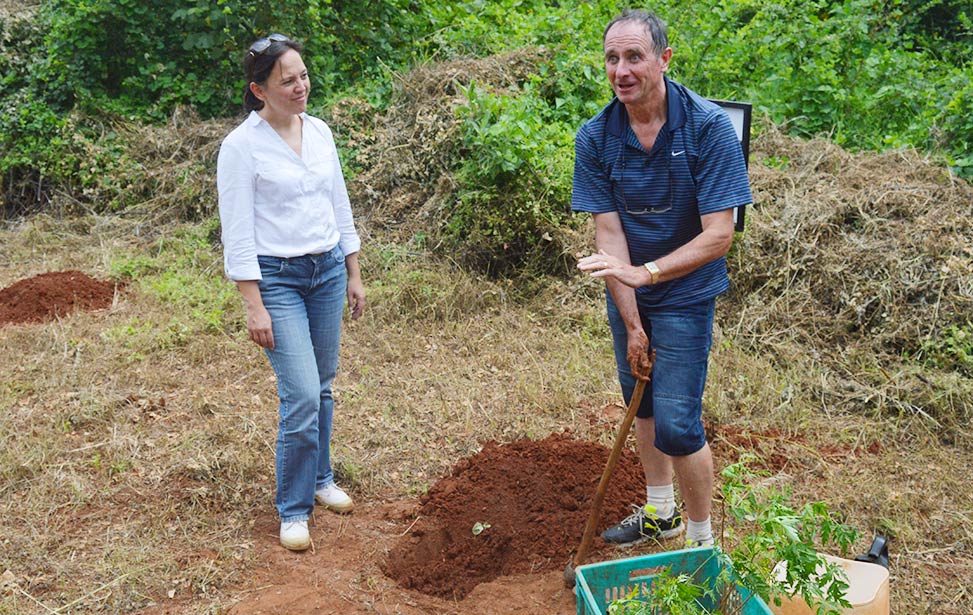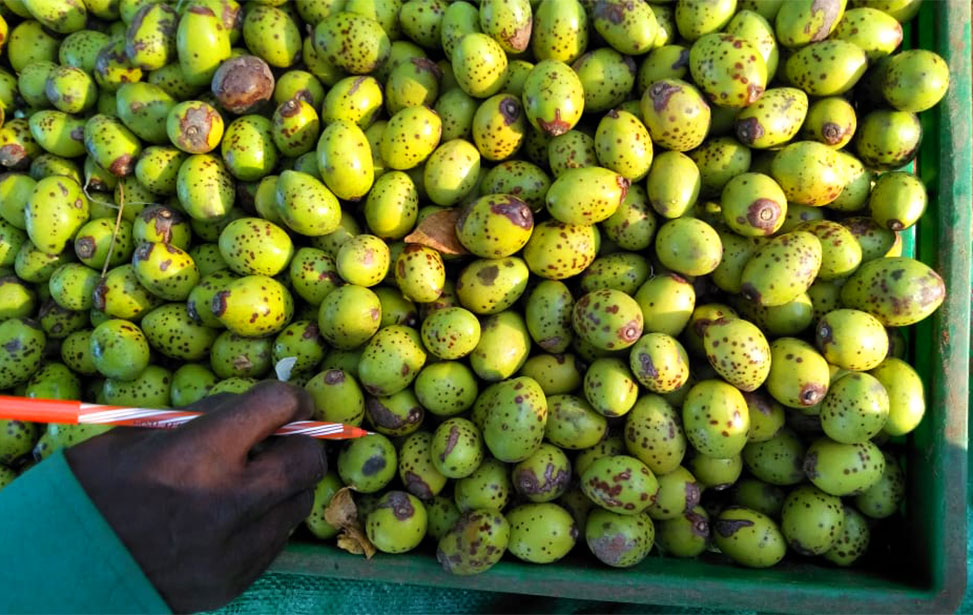
Recording tree number based on collected fruit
Photo courtesy: Better Globe Forestry
The melia volkensii fruit collection process
- John Njenga and Samuel Nakhone
The fruit collection process is planned to ensure quality fruits are collected and delivered to the Better Globe Forestry nursery. 95 percent of the collected seeds are derived from fruits purchased from farmers with good quality trees that have been evaluated and pre-marked by the Better Globe Forestry team.
Better Globe Forestry has trained foresters for this process, while technicians have over the years identified Melia volkensii (mukau) trees which have straight and clean boles of up to 4 meters high; are disease free and without whorls; have no forking below 4 meters in height; and have grown to at least 8 years of age. These trees are called plus trees, from which mukau fruits are harvested.
Better Globe Forestry purchases up to 30 tons of mukau fruit in a year from farmers, which helps the community generate some income.
Each of the identified plus tree is marked with a unique tree number. Better Globe Forestry manages a database of the plus trees, which contains the following information:
- Year planted
- Month of fowering and fruiting
- Diameter at breast height
- GPS coordinates
- Village, sub location, location, sub county and county (administrative location)
- Farmer's contact details
Better Globe Forestry starts the fruit collection process by visiting the areas with marked plus trees to survey the maturity of the fruits and identify a collection center. The site logistics manager drafts the fruit collection plan for approval by the operations manager. Then, farmers harvest the fruits from marked mukau trees. Quality control is completed by trained community representatives, and at this stage the fruits are sorted and weighed.
The fruits are then transported from the farm to a collection point, then later to the nursery. Coordination is done by the site logistics manager. At the nursery, the weight is confirmed again, and all documentation is filled, signed, shared, and filed. Lastly, the farmers are paid according to the quantity collected from each farm via the mobile application. For the purpose of upholding prescribed fruit quality, job cards follow the whole collection process.
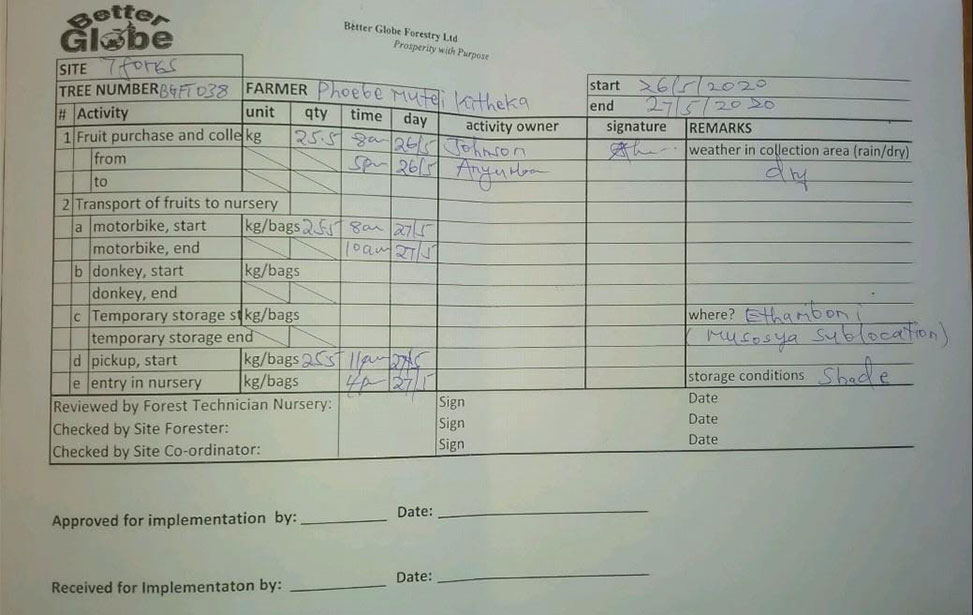
This job card is used to record the fruit collection process and track the "plus tree" seeds through the production process
Photo courtesy: Better Globe Forestry
Fruit collection is primarily important because it is the first activity in the entire chain of tree planting. Purchasing massive quantities of fruits from farmers is in line with one of Better Globe Forestry's mission of eradicating poverty and improving livelihoods in local communities. Identification of plus trees for fruit collection is important for quality control and future input in the in-vitro multiplication facility.
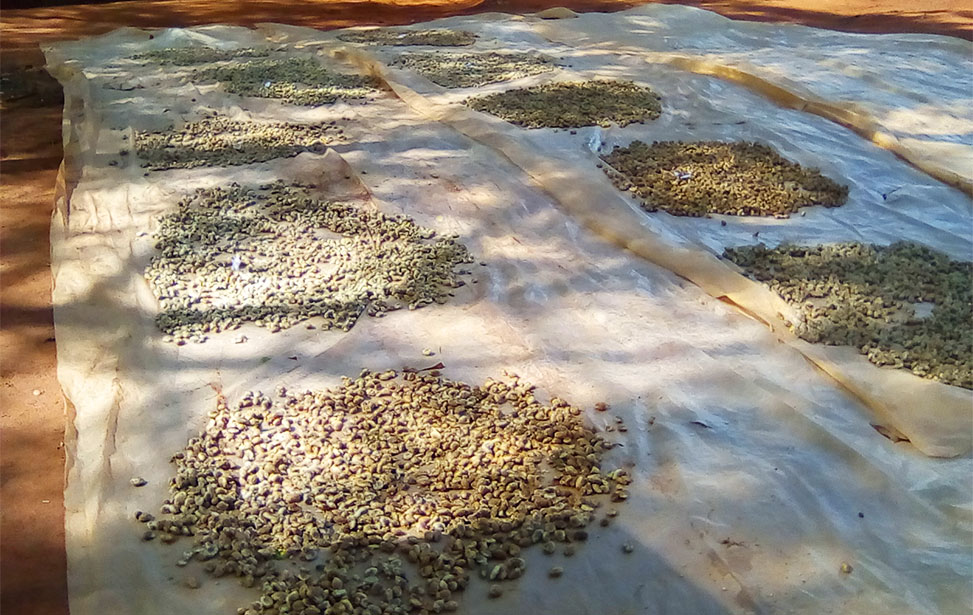
After depulping the mukau fruits, the nuts are dried in the shade for at least 6 hours before they are cracked to expose and collect seeds
Photo courtesy: Better Globe Forestry
Purchasing mukau fruits from farmers is a tool for promoting environmental conservation and restoration. Trees that would normally be cut for firewood or charcoal are spared, because farmers are instead able to sell the fruits to Better Globe Forestry.

